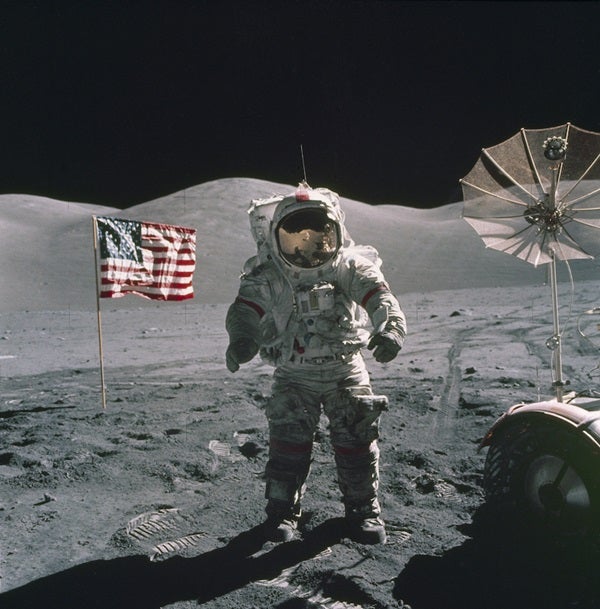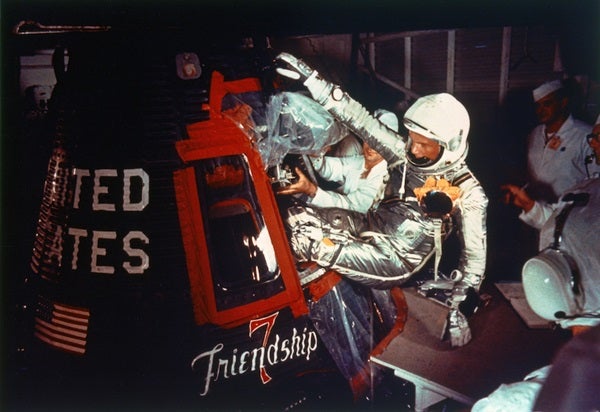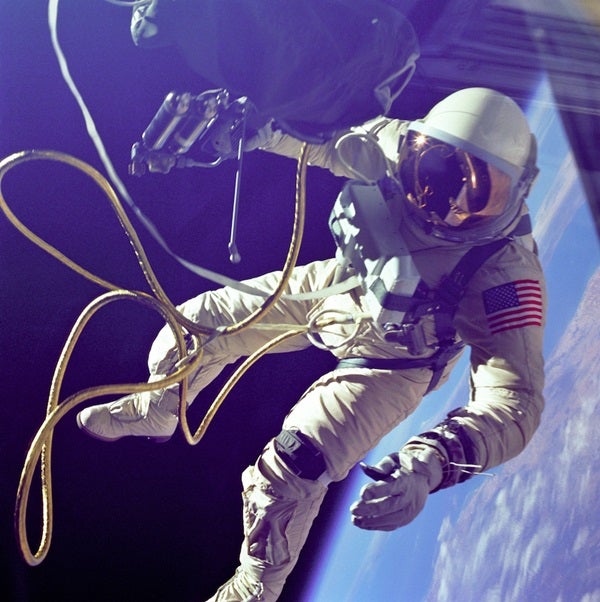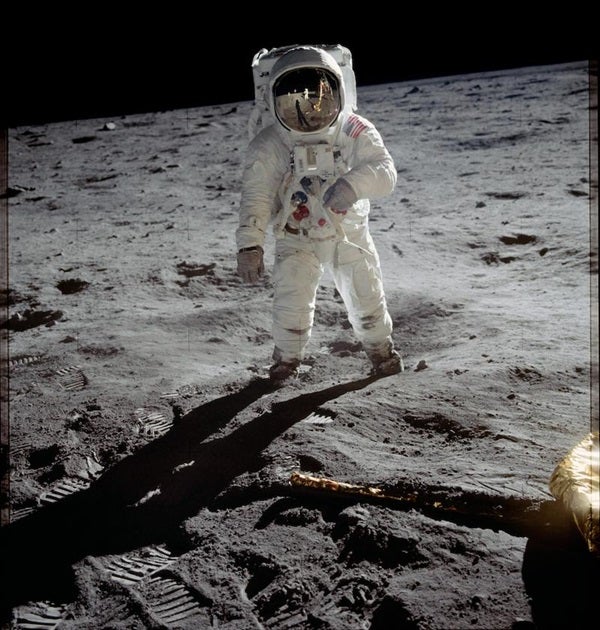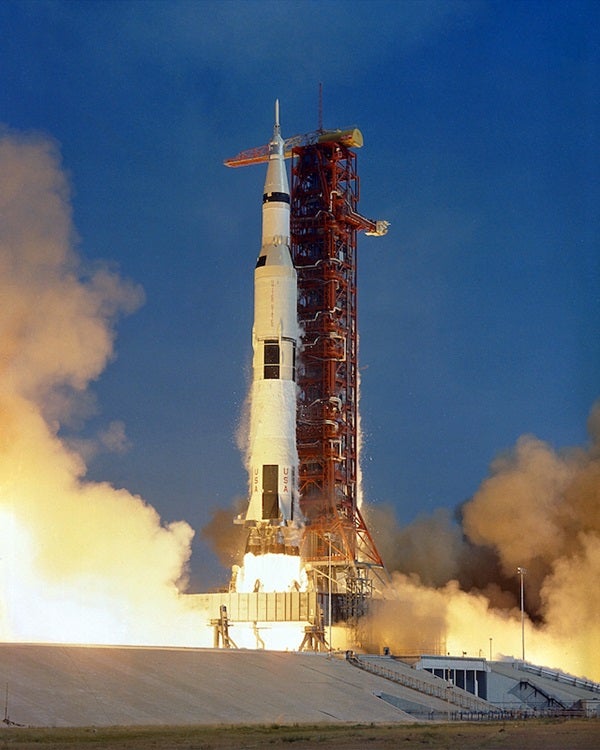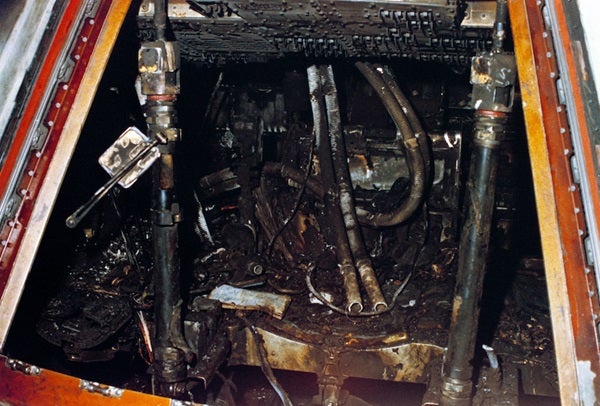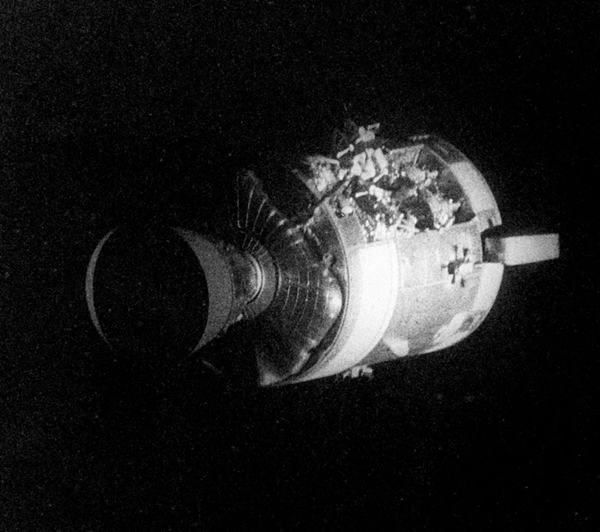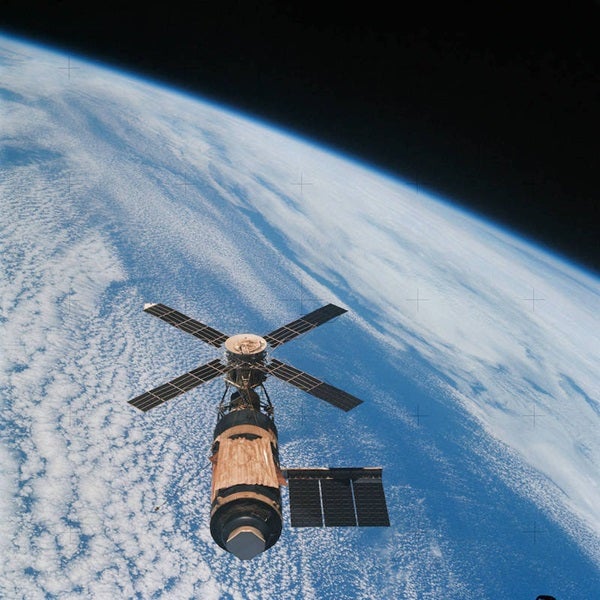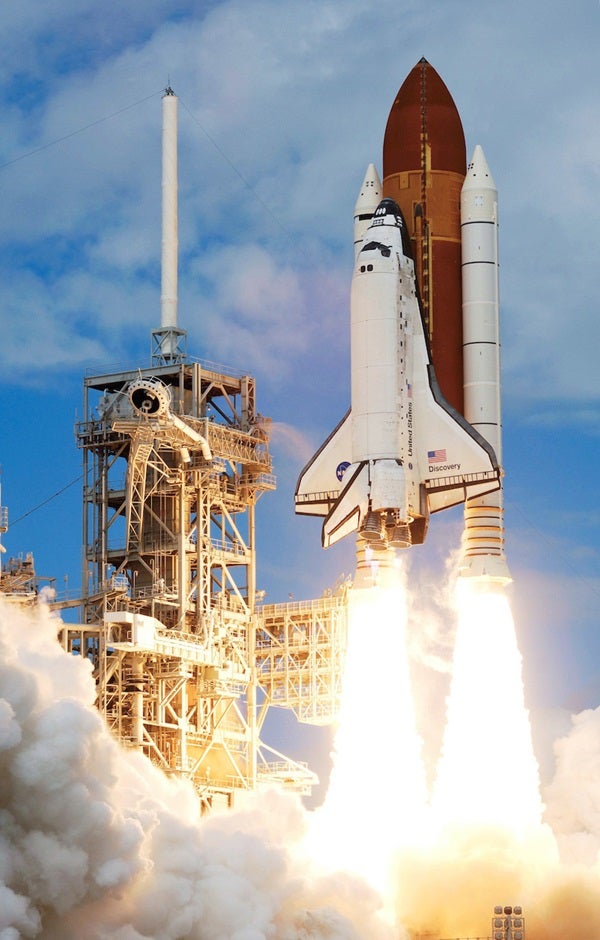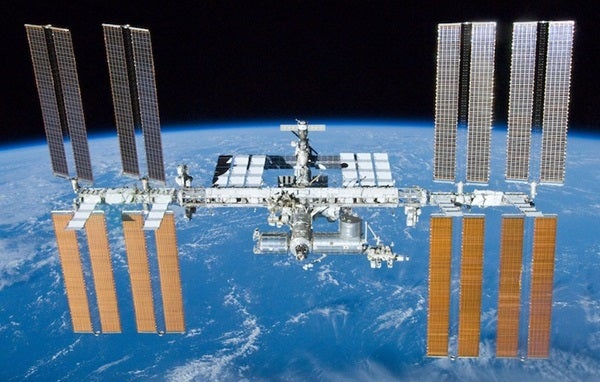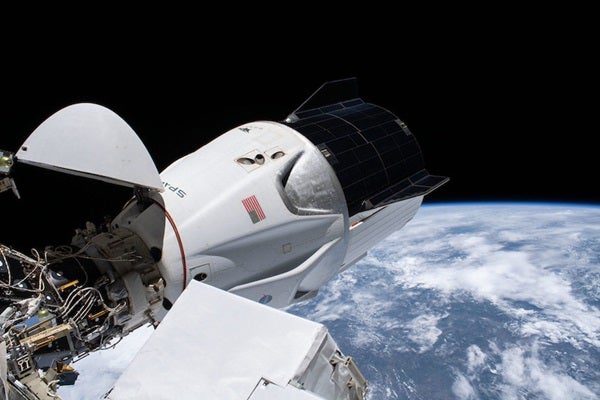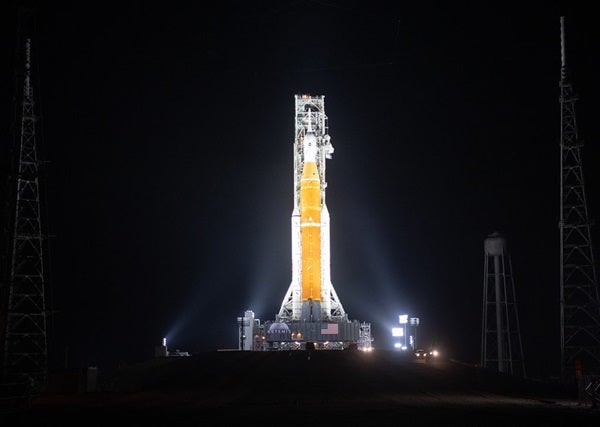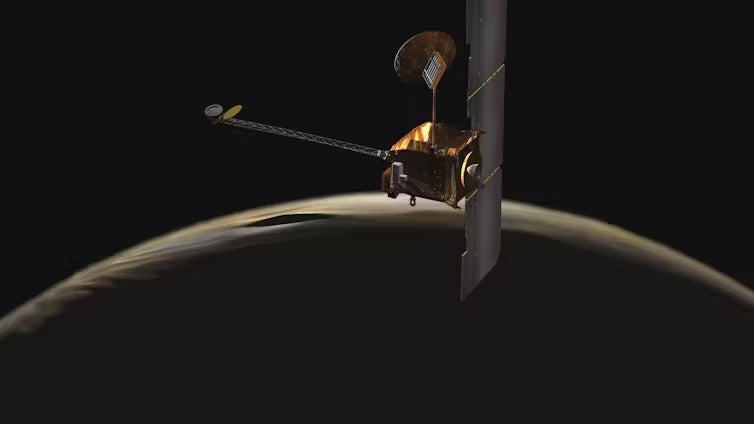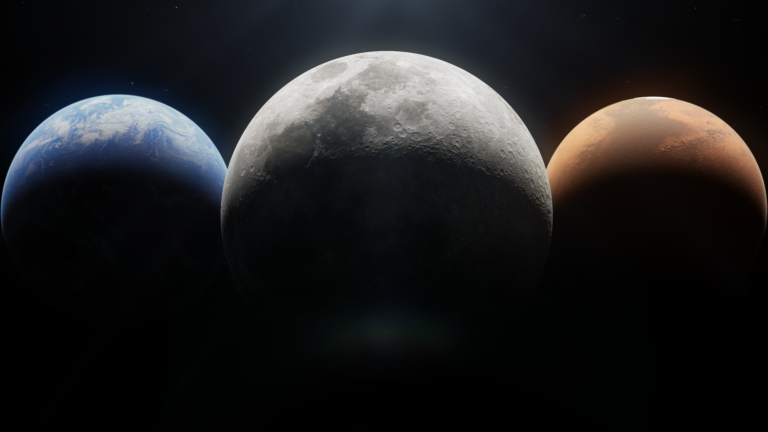The last human to walk on the surface of the Moon was Apollo 17 Commander Gene Cernan on Dec. 14, 1972. NASA is now preparing to send the first woman and the first person of color to the surface of the Moon in the coming years with the Artemis missions, launching aboard its powerful Space Launch System.
Before the next humans land on the surface of our nearest celestial neighbor, it’s worth taking a look back at the history of human spaceflight programs in the U.S., starting with NASA and concluding with SpaceX. While each program had its own goals, their euphoric successes and heart-wrenching failures have ultimately helped shape the Artemis program and the way humans fly to space today.
Project Mercury
The first U.S. human spaceflight program, Mercury ran from 1958 to 1963 with the goal of sending men into orbit and returning them to Earth safely. The program successfully achieved this in six crewed missions carrying one astronaut each, initially starting with 15-minute flights and ending with almost a day and a half in orbit.
Project Gemini
Just as Artemis will test various technologies and resources for future astronauts going to Mars, the Gemini program — which ran from 1961 to 1966 — served as a bridge to the Moon. The program had four primary goals: testing an astronaut’s ability to fly long-term (up to two weeks) space missions, gaining knowledge of spacecraft docking and rendezvous procedures in orbit around both Earth and the Moon, demonstrating re-entry and landing procedures, and advancing our knowledge of the effects of long-term spaceflight on astronauts. Gemini consisted of 12 missions: Gemini 1 and 2 were uncrewed, while Gemini 3 through 12 were crewed by two astronauts each.
Apollo
The Apollo program was designed to send astronauts to the Moon and safely return them to Earth. Apollo was the culmination of Mercury and Gemini, running from 1963 to 1972 and ultimately sending 27 men to the Moon, including 12 who walked on its surface.
Saturn V
Long before the Space Launch System sat atop its launch pad at Cape Canaveral, there was the mighty Saturn V, which — until SLS officially takes flight — is the most powerful rocket ever built and launched. As tall as a skyscraper, the Saturn V had a flawless launch record and was solely responsible for sending all 27 Apollo astronauts to the Moon.
Apollo 1 Fire
But years before Apollo 11’s triumphant flight, NASA suffered a major setback. Fire broke out during a ground test of the Apollo 1 capsule on Jan. 27, 1967, resulting in the deaths of all three astronauts onboard the spacecraft: Virgil “Gus” Grissom, Ed White, and Roger Chaffee. This incident not only pushed back subsequent scheduled flights of Apollo, but also resulted in major redesigns of the spacecraft, management shakeups, and changes in safety culture within the program. It also marked for the public the inherit dangers of human spaceflight.
Apollo 13 Accident
While Apollo 13 was en route to the Moon for NASA’s third crewed lunar landing attempt, one of the two oxygen tanks onboard the Odyssey service module ruptured, emptying its contents into space. Ultimately, the crew was able to use the lunar module Aquarius as a lifeboat to orbit the Moon and safely return to Earth. NASA dubbed Apollo 13 a “successful failure,” in part because the crew was saved and because the agency gained valuable experience during the rescue.
Skylab
After Apollo came Skylab, America’s first space station. Its launch marked the final use of the Saturn V, whose third stage had been converted into a livable habitat. The program’s goal was to continue studying the effects of long-term spaceflight as well as perform experiments (some 270 in all) in fields such as biomedical and life sciences, materials processing, and astronomy. During its time in orbit, Skylab hosted three 3-person crews on missions lasting 28 days, 59 days, and 84 days, respectively, with each progressively setting new records for space longevity. This experience helped lay the groundwork for what would eventually become the International Space Station (ISS) decades later.
Space shuttle
The space shuttle, also known as the Space Transportation System (STS), was a partially reusable spacecraft that flew from 1981 to 2011. Designed to launch like a traditional spacecraft and land like an airplane, the shuttle was responsible for delivering payloads to orbit for both scientific and military use as well as later helping deliver and assemble modules for the ISS.
Challenger Explosion
On the borderline-freezing Florida morning of Jan. 28, 1986, the space shuttle Challenger broke apart 73 seconds after launch, resulting in the deaths of all seven astronauts onboard. The cause of the explosion was a failure of both redundant O-rings within the shuttle’s right solid rocket booster due to the extremely cold temperatures, which thus failed in sealing their respective joints. The risk of O-ring failure had been presented to NASA management by several engineers but had been ultimately dismissed. Once again, NASA was forced to undertake significant spacecraft redesigns, management shakeups, and changes in safety culture within the program.
Columbia Disaster
On Feb. 1, 2003, the space shuttle Columbia broke apart and disintegrated during re-entry into Earth’s atmosphere after a 16-day mission, killing all seven astronauts onboard. The cause of the incident was a piece of foam from the shuttle’s external tank that dislodged and struck the leading edge of the left wing shortly after launch. This resulted in a loss of structural integrity and Columbia burned up on re-entry. Like the Challenger disaster, the problem had been brought to the attention of NASA management — albeit this time while the mission was still in space — but the concerns were also dismissed.
International Space Station
Initially intended as a U.S.-only space station named Freedom, redesigns and expanded international participation eventually resulted in the (American) football field-sized orbiting laboratory known as the International Space Station (ISS). Construction of the ISS in orbit began in 1998 and most of the orbiting outpost had been assembled by 2011, with the most recent module added in 2021.
The purpose of the ISS is to advance our knowledge of living and working in space, including testing equipment and systems that will be required for future long-term missions to the Moon and Mars. Science experiments are regularly conducted in the fields of astrobiology, astronomy, biology, botany, meteorology, physics, and many others.
Crew Dragon
Following the retirement of the Space Shuttle in 2011, NASA lost the means to launch astronauts from American soil and had to rely on the Russian Space Agency (Roscosmos) to send crew to the ISS. This changed with the launch of Demo-2 using SpaceX’s Crew Dragon spacecraft and Falcon 9 rocket, sending Doug Hurley and Robert Behnken to the ISS. This marked the first launch of astronauts from U.S. soil since 2011 and the first launch of a commercial vehicle carrying astronauts. At the time of this writing, Crew Dragon has taken 24 astronauts into space, including 4 civilians aboard the privately funded Inspiration4 mission.
Onward to Artemis
NASA has a rich history of human spaceflight marked by incredible achievements as well as heartbreaking defeats. As Artemis 1 now proudly sits atop its launch pad at Cape Canaveral, ready for its maiden flight, we reflect on how this history has helped shape the ongoing efforts to return to the Moon and advance the future of human spaceflight for all.

